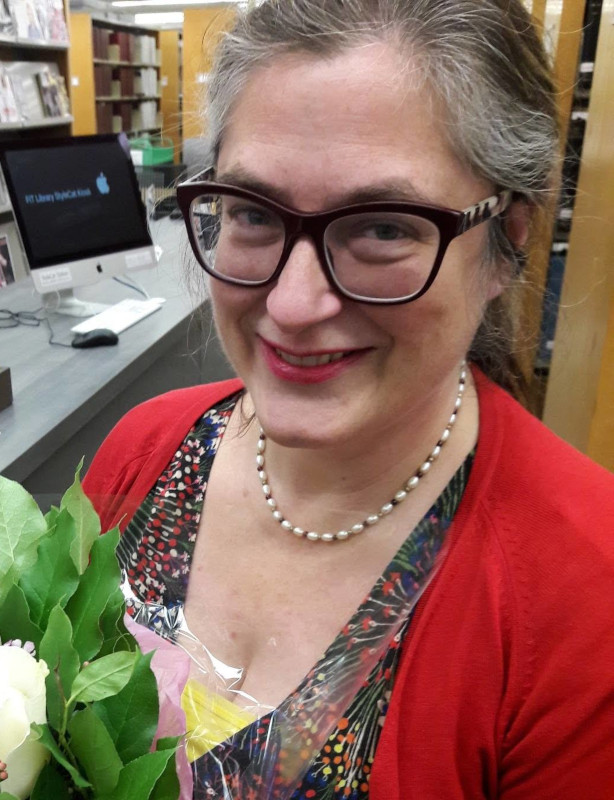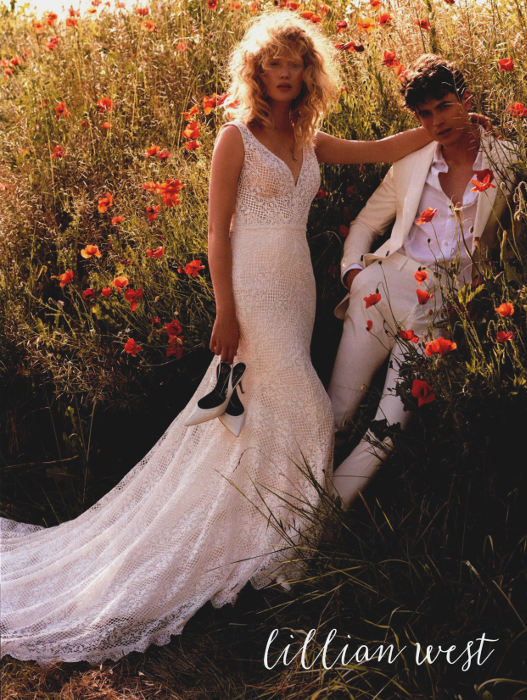
Happy New Year! Human beings have celebrated marriage in formal ceremonies for all of recorded history. From the rise of magazine culture in the 19th century, weddings have been celebrated and sold in this format aimed predominantly at women. Magazine coverage of wedding ceremonies, receptions, gowns and social expectations provides a window into changing cultural expectations of brides and grooms, gowns and gifts. FIT Library’s periodicals give a colorful view of changing bridal fashions.
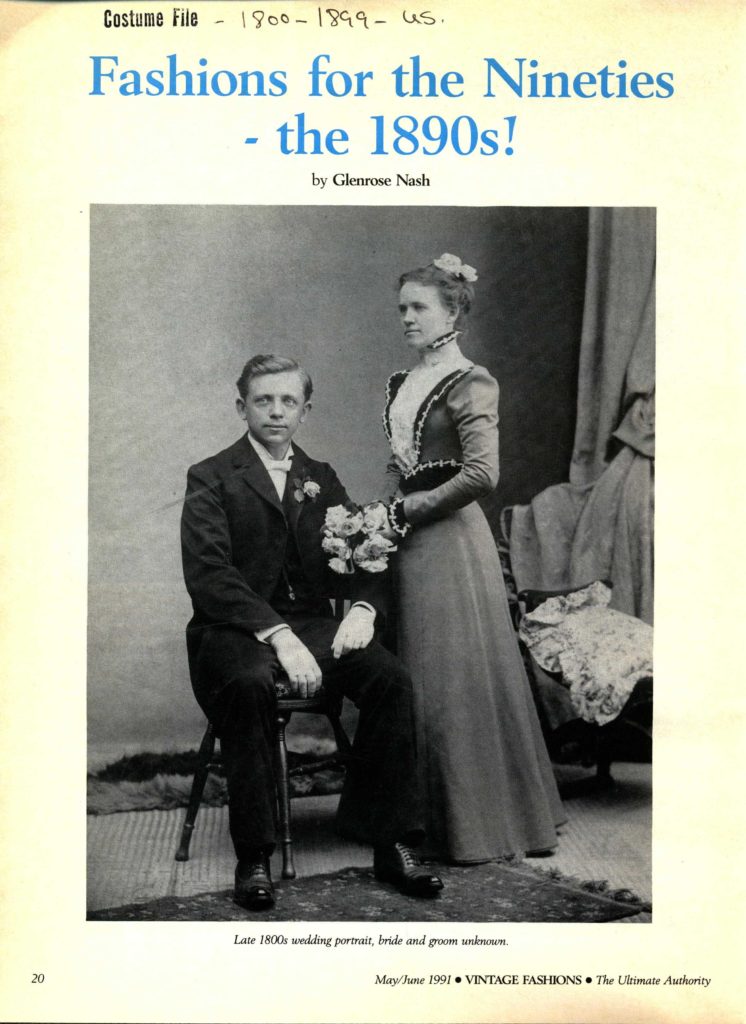
From gigantic puffed sleeves of the 1890’s, to sleek and elegant satin of the 1930’s, and don’t forget the lace embroidered mock turtlenecks in the 1970’s, wedding gowns have transformed throughout the decades. While looking through bridal magazines the changing silhouettes were readily apparent; what’s more fascinating was how these publications reached brides through advertisements and articles.

The magazines made (and make) one day, one dress, one hairstyle or makeup product, one ring, one vacation, one china set impact the entirety someone’s life. The countless options presented reflected the culture, social stratum, media, and of course fashion of the time period. How the magazine culture presented brides and weddings took many turns, while other elements remained the same.
This article takes a quick look at the history of American wedding gowns as illustrated by magazines in our Periodicals and Electronic Serials collection, on the 4th floor of the FIT Library. (We hope you will come take a look yourself!)

Because magazines depend upon photos, it’s easy to see the popular styles of the past. Nineteenth and early twentieth century magazines had fewer images, often depending upon engravings for their image punch.* As photography has gotten cheaper, magazine pages have been more punctuated with photographs. This allows a greater variety of gown styles to be advertised, illustrating more fashionable details within the same trends. This advertisement is from Brides Magazine, November December 2018.
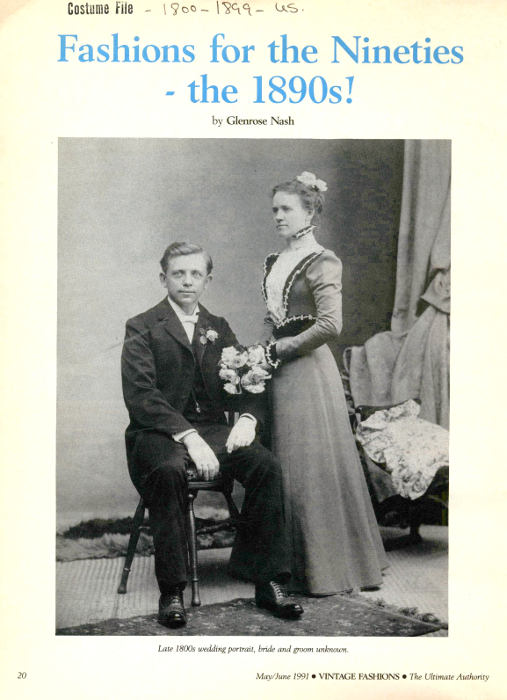
Images of 19th century brides show fashionable gowns of many cloths and colors. Victorian brides often wore their “best dress” to be married in, not the single-purpose white gown so popular today. 1990s issues of Vintage Fashions highlighted 1890s wedding styles: gigantic puffed sleeves were fashionable to contrast and emphasize the bride’s waistline. Soft laces and silks were favored and paired with a tulle veil. Throughout the 1890s and into the early 1900s, the sleeve proportion became simpler and the skirt fit closer to the hips.
White gowns became fashionable in the late 19th century. This trend was probably the result of popular engravings featuring European princesses (beginning with Queen Victoria herself) in white wedding gowns festooned with orange blossoms. Celebrations of European royal weddings were popular in early magazines such as Harper’s Bazaar and Godey’s Lady’s Book. England’s Queen Victoria had many children who intermarried all over the continent, providing media reinforcement for this growing custom. The white gowns’ formality, innocence, and distinctiveness caught on and now is the symbol for weddings in western cultures.
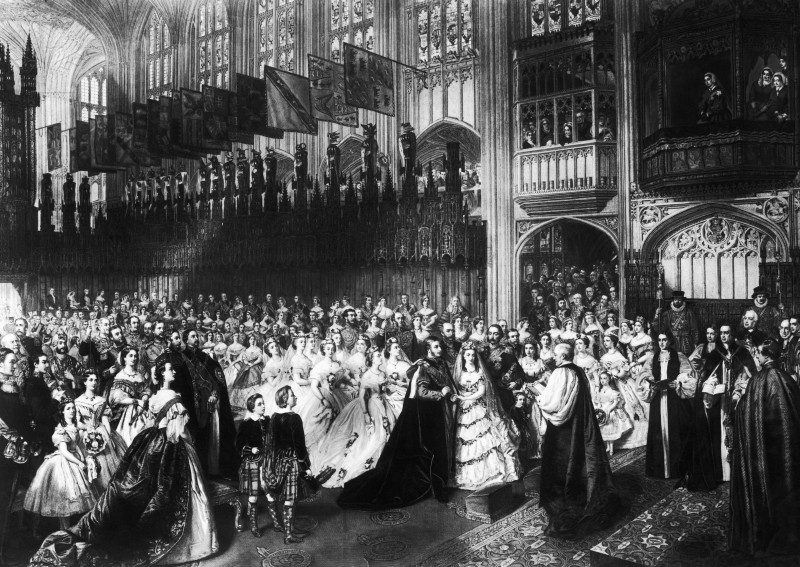
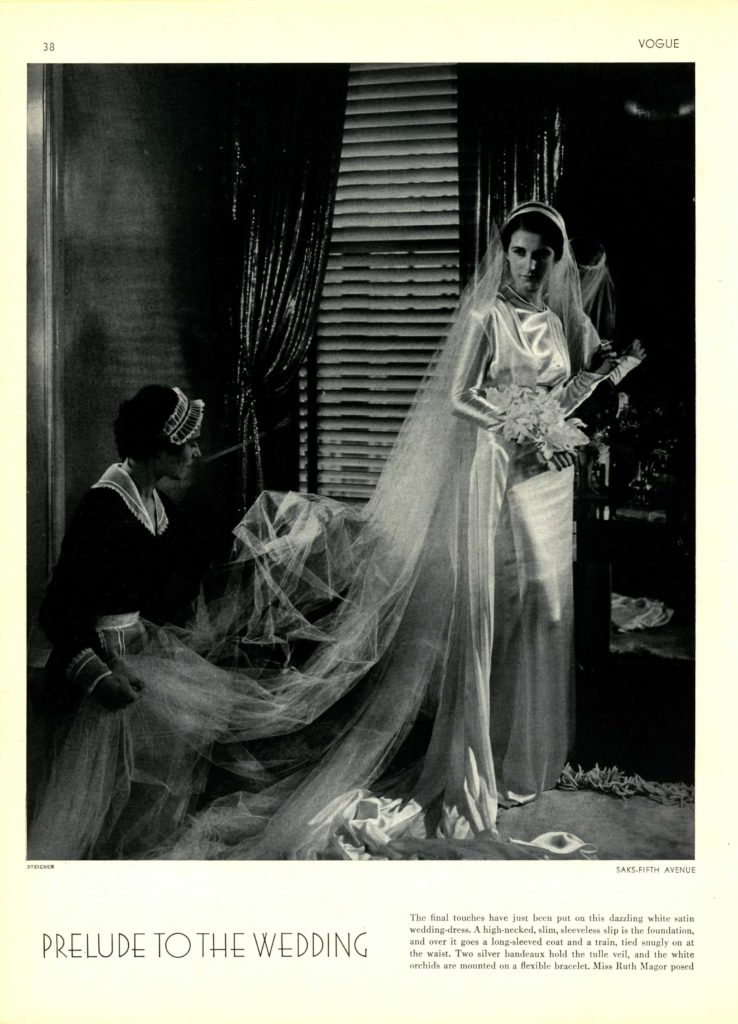
The style vastly changed by the 1930’s. Looking at the November 1933 Vogue, a Saks-Fifth Avenue ad showed a bride with a high neck sleeveless satin gown (bias cut?) accompanied by a long sleeved coat and a train tied snugly to the waist. The tulle veil fell perfectly to the silhouette of the gown, creating an elegant look. This sleek and modern look contrasted greatly with the more detailed extravagance of the Victorian age gowns of the 1870s-1900s.

This elegant silhouette has evolved throughout the years to become the timeless wedding gowns of 2018, as seen in the title image. The long lines reflect the glamour yet simplicity of the 1930s bride above. This image is from Martha Stewart Weddings, Winter 2000.

The elegant trends of the 30’s shifted to the bohemian styles of the 70’s. As seen in the August 1976 edition of Brides Magazine, the trendiest wedding gowns had a lace mock turtleneck leading to long flared sleeves and a loose fitting satin skirt. The lace embroidery matched the bottom of the gown as well as the veil. The bohemian lace and embroidery has carried on today with many gowns, such as the cover gown above, giving a vintage look. This gown carried some elements seen in Victorian fashion, such as the lace and sleeves, and also incorporates the satin skirt from the 1930s bride.
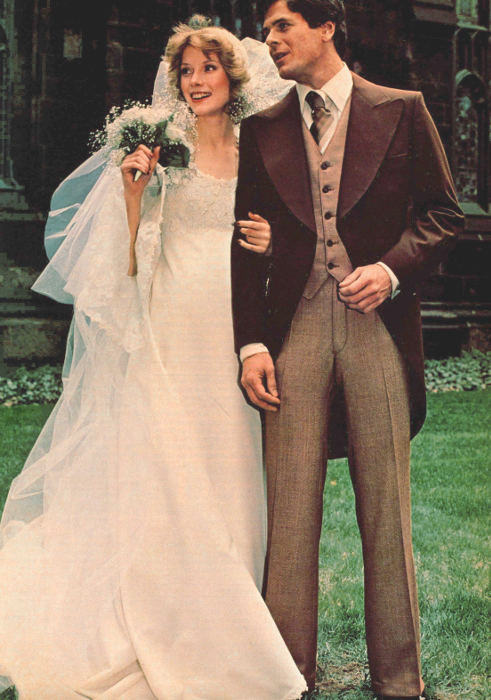
The 1970s bridal gown referenced the high waisted gowns of the 1810s, the lace romanticism of the 1890s, and the modern simplicity of the 1930s, as seen in this couple from Brides August September 1976 issue. Menswear also got some updating, and colored tuxedos were briefly fashionable.
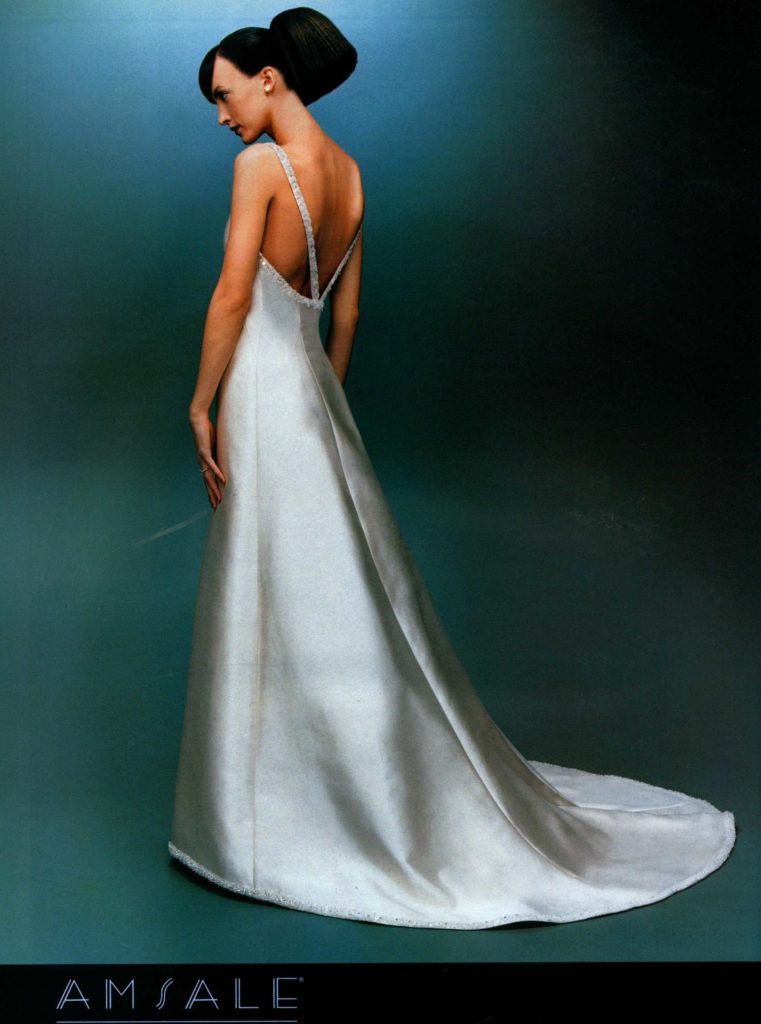
Throughout the 2000s, simplicity and minimalism were favored as shown in this advertisement in Martha Stewart Weddings, Winter 2000. The sleeves are gone, and beautiful satin ball gowns or mermaid styles with delicate embellishments were popular. By contrast, today there is rarely a plain and simple gown in the magazine. Now wedding gowns are seen as personable and unique, and you see more of an influence from red carpet fashion silhouettes dictating the trends.
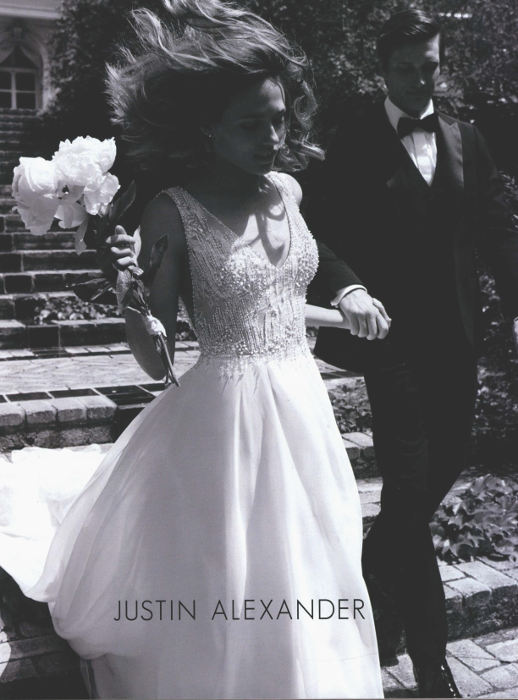
Recently, a variety of styles has become popular rather than the dominant silhouette seen in earlier magazines. Popular styles of today shown in the November December issue of Brides, at right and below, include ball gowns and mermaid gowns, strapless and sweetheart necklines, an embroidered bodice with sequins, lace, or beading, and satin or chiffon skirts. Global sourcing makes detailed embellishment available at all gown price points. Historical references are remixed for new tastes. Designers offer eclectic and extravagant styles to appeal to brides wanting to be a princess on their wedding day.

All in all, these publications highlighted the iconic fashions of their decades. The evolution from Victorian influence to the modern gowns of today, where anything goes! Today we see hints of influence from every decade, all beginning with the white gown. The wedding gown is an iconic symbol that has transformed through the styles of women’s fashion, but not just the wedding gown styles were apparent in the magazines. In the next article, we will dive into the culture of weddings and consumers perceived these publications. Till then, many happy beginnings to you in 2019!
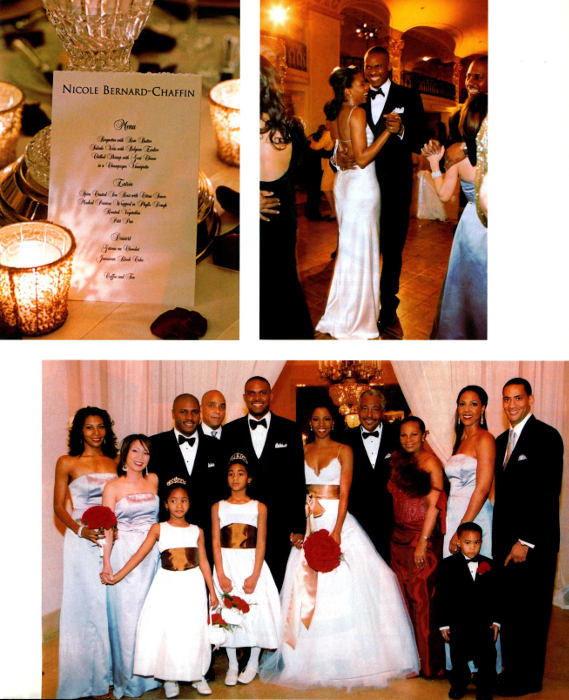
* Our recent post about Godey’s Lady’s Book gives a lot of background about the evolution of fashion plates.
This post was a project by our student aide, Allison Felts, working with Beth McMahon, your regular correspondent. Look for more of Allison’s work with Beth in 2019!
